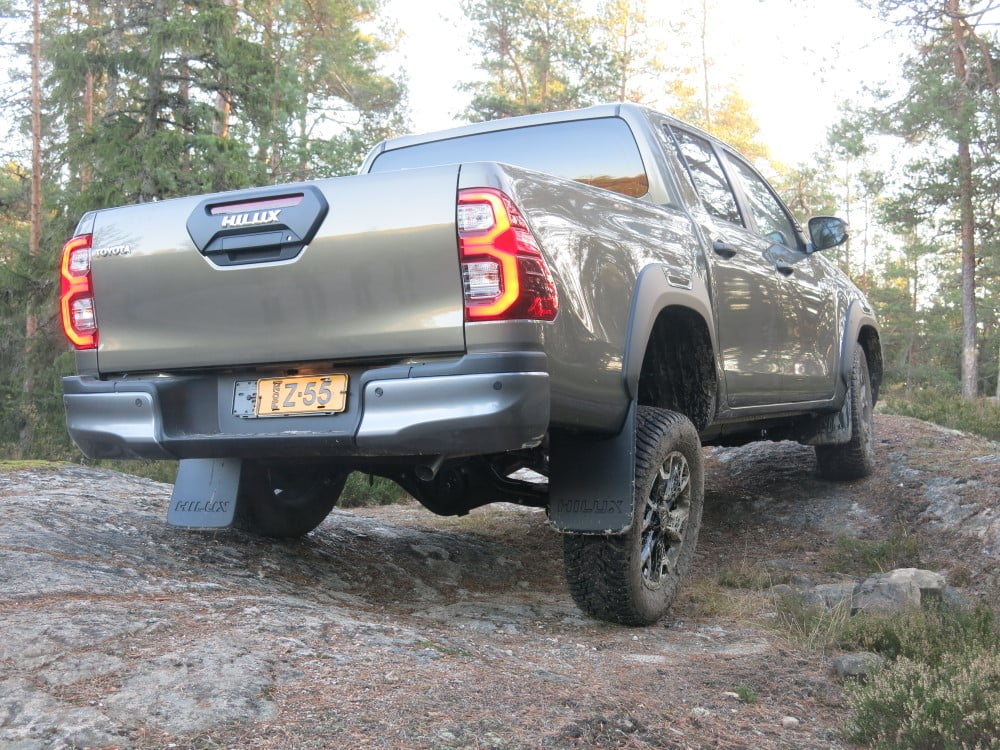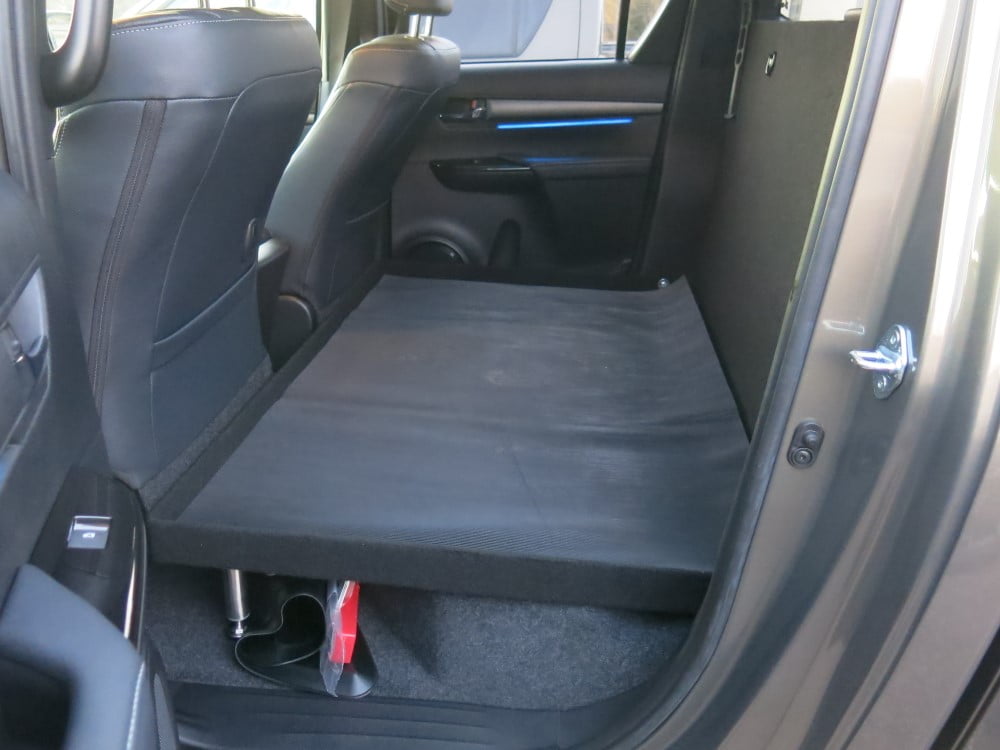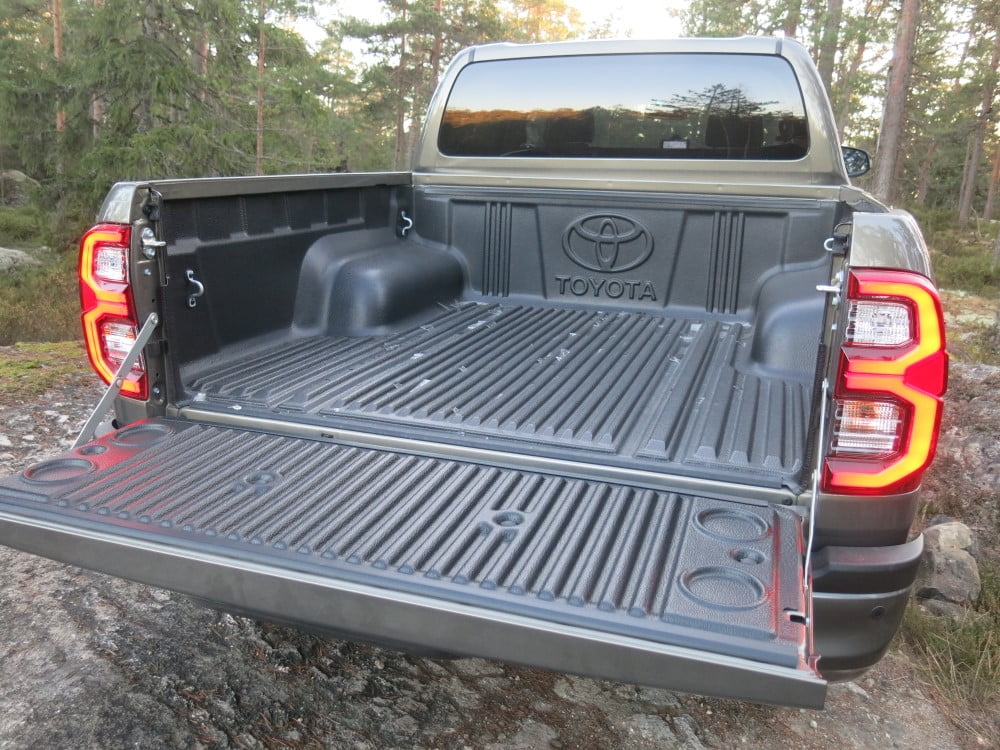We got a brief look at the new Toyota Hilux pick-up truck.
The redesigned Toyota Hilux features a new design, a new 2.8-litre engine and new equipment.
With a load capacity of over 1,000 kg and a towing capacity of 3.5 tonnes for a trailer with brakes, the Hilux is available in both body styles (Extra Cab and Double Cab).
The front end of the Hilux has now been completely redesigned with a new front grille and front bumper. The new look is complemented by available new LED lights both front and rear, new 18-inch wheels and a bunch of new exterior colours.

Updates to the interior include a new-look instrument cluster and a new eight-inch media centre touchscreen.
The new Toyota Hilux’s powertrain lineup grows with the arrival of a new 2.8-litre, 204-horsepower engine that joins the 2.4-litre.
Both engines are available on both body styles, and in addition to the six-speed manual transmission, a six-speed automatic transmission will be available on both body styles.

On and off road
The day’s programme included both on-road and off-road driving.
The driving position was well within reach of the driver. The driver’s chair is also surprisingly high, which can be useful for off-road driving, for example.
The car offers two driving modes, Eco and Power. The difference between these modes is particularly noticeable when accelerating. The car shifts quite smoothly to a higher gear when you press the accelerator to the floor.

When driving on the road, I was surprised right from the start by the rather loud tyre noise from the rear wheels of the car. The tyres are studded, which significantly contributed to the noise. There is no disturbing noise from the front wheels in the cabin, nor from the engine.
On the road, though, the main irritation comes from the lane-keeper, who reacts to lane markings by braking on one side of the car with the other wheel.
This happens rather abruptly and feels quite unpleasant. Fortunately, the lane-keeper is easily disengaged by a switch on the steering wheel.

Lane departure warning is particularly annoying when driving on narrow roads. Then the lane keeper constantly reacts to lane markings.
The car has an intelligent cruise control, which worked well during the test drive. The car kept up well with the queue.
Visibility from the car is good in all directions. The side mirrors are large enough.
The suspension was stiff and perhaps hard on the road, but there was no load on the car during the test drive. Under load, the suspension is probably softer.
Off-road, the Hilux is a pretty sure-footed performer. We got to test the car in places you’d never have bothered to try in your own car.
During the off-road drive, the weather was dry and the ground was already slightly frozen. The car had studded tyres, which slightly improved the grip.
Some modifications have also been made to make off-road driving easier. For example, the car now idles at 680 rpm, compared to 850 rpm in the previous version.

Off-road, the car was able to pull well at idle. This allowed the driver to concentrate on steering and braking.
The car has a ground clearance of 29.3 cm and a ground clearance of 70 cm. The car has an approach angle of 29 degrees and a departure angle of 26 degrees.
The basic model costs less than EUR 38 000, with a short cab and a 2.4-litre engine.
The long cab version is available in both five-seat and two-seat versions. The starting price for the five-seater is just over EUR 56 000 and for the two-seater just over EUR 40 000.
The Toyota Hilux is designed for work use and is well suited to that purpose. More information about the car is available via the link below.





